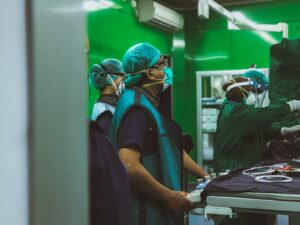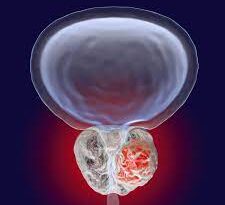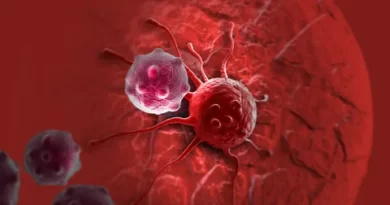New Methods in Cancer Treatment – Germany
The German Advanced Biological Medicine Clinics apply alternative and traditional treatments in a combination for cancer patients. This approach includes the use of modern discoveries and innovations and focuses on the treatment of cancer patients rather than symptomatic treatment.
Biological Medicine Features
The priority of German clinics is to find the true cause of the disease and to treat it. For this, natural remedies and the body’s self-healing ability are used. Doctors analyze the patient’s holistic lifestyle, search for organic causes and select the most gentle treatment regimens. Patients also undergo mental hygiene sessions that encourage them to have the right attitude necessary to fight the disease.
Alternative Methods in Cancer Treatment
Alternative cancer treatments are used to reduce the side effects of standard treatments and to strengthen the patient’s immune system. These treatments combine general medicine with alternative and biological therapies and are selected according to the individual characteristics of the patient. The aim is to achieve sustained remission of the disease and to improve the patient’s quality of life.
Insulin Enhancement Therapy (IPT): Insulin Enhancement Therapy (IPT) is a treatment method used to reduce insulin resistance in patients with type 2 diabetes. IPT may include regular insulin injections as well as the diet and physical activity pattern of diabetic patients. IPT allows patients’ bodies to use insulin more effectively and can thus help keep glucose (sugar) levels under better control. However, IPT should only be guided by doctors and personalized to patients’ medical conditions.
Photodynamic Laser Therapy (PLT): Photodynamic Laser Therapy (PLT) is a treatment method used for the treatment of some skin diseases and cancerous diseases. PLT works by combining a laser light directed towards diseased cells and a photosensitive agent applied to the body. The photosensitive agent is activated by laser light directed towards the diseased cells and causes the diseased cells to be destroyed. Since PLT is a minimally invasive treatment method, it does not require surgical intervention and patients generally show a faster recovery. However, PLT should only be guided by physicians and personalized to patients’ medical conditions.
Galvanizing: Galvanizing can be defined as the electrolysis process used to create a protective coating of metal surfaces. In this process, the metal surface is treated as the anode and another metal is used as the cathode . As a result of the electric current between these two metals, reaction products such as oxygen and hydrogen are formed on the anode surface.
Biological (individual) Cancer Treatment: Biological (individual) cancer therapy is a treatment approach that identifies specific targets of cancerous cells and administers treatments aimed at these targets. These treatments aim to inhibit the growth and spread of cancerous cells by using the body’s natural systems. Biological cancer treatments are personalized to patients’ medical conditions, type of cancer, and nature of cancerous cells, and are often combined with other treatments such as surgery and radiotherapy. Biological cancer treatments should be considered as a comprehensive treatment plan and should be guided by physicians.
Infusion Therapy: Infusion therapy can be defined as a method of administering drugs through a vein in the body to treat a disease or control its symptoms. Medications can be given by injection, endoscopy, or intravenously (through a vein). Infusion therapy can be used for the treatment of persistent or severe illnesses, or it can be used to control temporary symptoms such as pain or inflammation . Infusion therapy should be guided only by physicians and personalized to patients’ medical conditions.
Local Hyperthermia : Local hyperthermia is a treatment for the treatment of cancerous cells. Local hyperthermia involves applying high temperature locally to a specific area of the patient’s body. Since cancerous cells die under high temperature, local hyperthermia aims to inhibit the growth and spread of cancerous cells. Local hyperthermia is usually administered in combination with other treatments and should be directed by physicians. Since local hyperthermia is a minimally invasive treatment method, it does not require surgical intervention and patients generally show a faster recovery.
The Most Advanced Types of Treatment
Among these approaches, the most advanced treatment concepts can include:
Cancer genetics: This approach uses molecular testing to identify genetic abnormalities in a patient’s cancer cell and, based on these abnormalities, determines the appropriate treatment options for that patient.
Immunotherapy : This approach uses drugs to activate the patient’s body’s natural immune system, which helps it fight cancer cells.
Targeted therapy: This approach aims to prevent normal cells from being damaged, rather than only affecting the cancer cell, by identifying a specific target of the cancer cell.
Surgical treatment: This approach is the surgical removal of cancerous tissue or tumor.
Radiotherapy: This approach aims to destroy the cancerous tissue or tumor with radiation.
The most appropriate treatment approach for each patient is determined by the patient’s individual condition, tumor location, tumor size and severity, general health status of the patient, and other factors.
Conventional Chemotherapies: Conventional chemotherapy is a widely used treatment method in the treatment of many cancers. This treatment is performed by administering toxic (poisonous) agents to the body to slow down or stop the growth or proliferation of tumor cells . Chemotherapy is usually given intravenously (through a vein) or orally (by mouth). The effect of this treatment may also damage healthy cells other than tumor cells, so side effects may also occur. It can be used alone or in combination with conventional chemotherapy, surgery, radiotherapy or other treatment modalities.
Anti-hormone therapies: Anti-hormone therapies are a form of cancer treatment used to block the action of hormones that cause cancer cells to grow and develop. This treatment is particularly effective in hormone-dependent cancer types such as prostate, breast and ovarian cancers. Anti-hormone therapy is performed by stopping the production of hormones, reducing the effect of hormones or preventing the binding of hormones to the body. This treatment can be administered orally or in the form of drugs administered intravenously . Anti-hormone therapy can be used alone or in combination with other cancer treatments and is selected based on the patient’s condition and type.

Disadvantages of Oncology in Developing Countries
In developing countries, the disadvantages of oncology may include more difficulties and barriers to cancer treatment than in other countries. These may include:
Accessible and adequate healthcare: In developing countries, it is difficult for patients to access cancer treatment and adequate services. This may be due to lack of medicines and equipment needed to treat patients, inadequate hospitals and doctors.
: In developing countries, cancer treatment can be costly and most patients have limited economic resources. This can result in patients not getting the medications and equipment needed for treatment.
Lack of education: In developing countries, there may be a lack of oncological education and knowledge. This may result in patients not being able to determine the correct diagnosis and treatment methods or make the right medical decisions.
Poor transport: In developing countries, patients’ access to healthcare is difficult and there may be transport shortages. This can prevent patients from going to treatment centers or hospitals.
Cultural beliefs: In developing countries, cultural beliefs and belief systems may prevent patients from accessing accurate and accurate information about cancer treatment or receiving treatment.
These reasons may create more challenges and barriers to cancer treatment in developing countries and result in a lower cure rate for patients.
Treatment Fees in Germany
Treatment fees in Germany vary according to the patients’ health status, treatment methods and hospital quality. Health care in Germany is usually covered primarily by the insured, and fees may be higher for uninsured patients. In addition, depending on factors such as treatment method and hospital quality, patients may have to pay extra fees out of their own pocket. The healthcare system in Germany is highly developed and patients often receive high-quality care, but hospital fees can be high and incur a cost for patients.
You can benefit from the privileges by contacting us.
- Best price guarantee
- You will not encounter hidden payments.
- Personal support / interpreter support
- Free transfer to airport, hotel or clinic
- Package prices include accommodation.
- We help you get a visa.
- Insurance against unforeseen medical expenses




